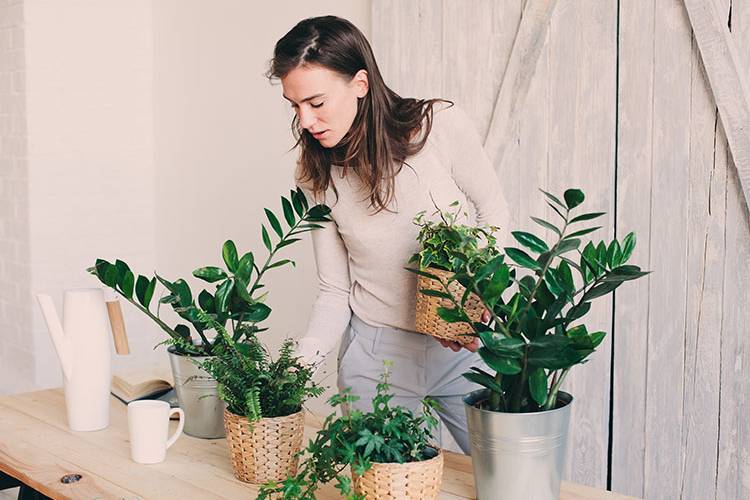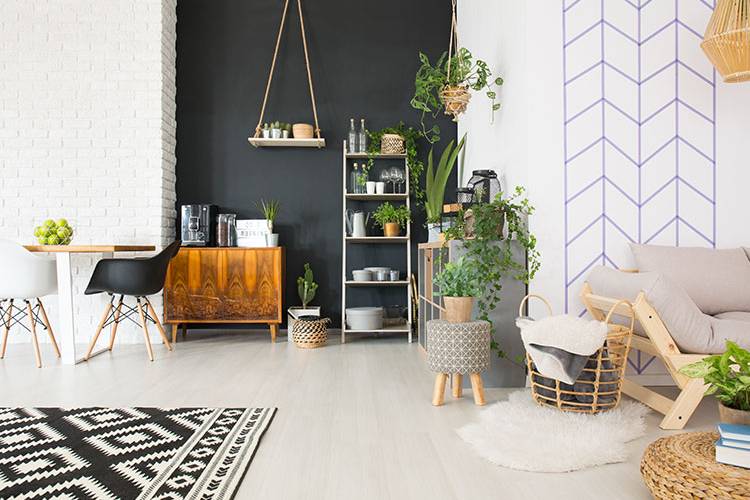Put a plant in your life and breath!
In the late 1980s, NASA launched a study which determined that indoor plants purify home environments, reducing pollution by up to 85% in our homes.
IT’S ECO, IT’S LOGICAL
Share

More and more people fill their homes with plants in order to lead a healthier lifestyle. The NASA report corroborates that in addition to decorating our homes, the plants help us maintain clean environments free of chemicals that are so often present in all kinds of products used in our homes.
They contribute in detoxifying the rooms, refreshing and purifying the air, and allowing the use and recycling of rainwater. They transform "sick" buildings into more pleasant places, and above all, more efficient energetically speaking.
Experts recommend having plants, both inside and outside homes and offices. The plants filter the toxic agents, the heavy metals and hydrocarbons present in the air, the soil and in the water, neutralizing their harmful effects on our health and the environment.
The plants filter the toxic agents, the heavy metals and hydrocarbons
But when choosing what kind of plants to have, we must identify which are better in each case:
The living room
The more plants the better. In most homes, the room is a large area filled with electronic devices that emit electromagnetic waves and ambient noise. It is recommended to put as many plants as possible to minimize the negative effects of this contamination. But if the living room does not have much space, a bamboo palm will reduce the contaminated air derived from the paints, varnishes and / or lacquers of the furniture.

The kitchen
Aloe vera is the plant recommended by NASA to put in the kitchen. This space is usually filled with smoke, intense odours, artificial light, excess humidity, etc. The aloe vera absorbs all the residues that are in the environment and is able to indicate to us if the kitchen is contaminated, through some brown spots that appear on its leaves. You can also put an aromatic plant, such as basil which, apart from seasoning the dishes, acts as a natural barrier against insects.
The bathroom
If there is a place in the house with sudden changes of temperature and high levels of humidity, it is the bathroom. Therefore, it is good to have plants that take advantage of that moisture, reducing it naturally, in addition to absorbing the vapor that is released by some components present in cosmetic and hygiene articles. Ivy and Spathiphyllum are the most used because they live very well in these types of conditions. The begonia, in addition to providing colour, is well suited to wet areas, such as the bathroom.
The bedroom
In the bedroom, contrary to what has been believed for many years, it is very healthy to put plants that absorb CO2 and release oxygen at night. According to NASA, Sansevieria is listed as one of the best plants for purifying the air. In addition, emitting oxygen at night favours deep, restful sleep. We can combine it with a lavender plant, which reduces anxiety levels and induces sleep. Its aromas lower your heart rate, blood pressure and stress levels.
Tips on buying and having plants at home:
• Place them away from radiators and air conditioners.
• Avoid parts of the house with drafts, or frequent passage.
• Put the plants with flowers in places with lots of light.
• Do not buy the plants by their appearance and think about where they will be and for what purpose.
• Respect the space that the plant needs in order to grow.







